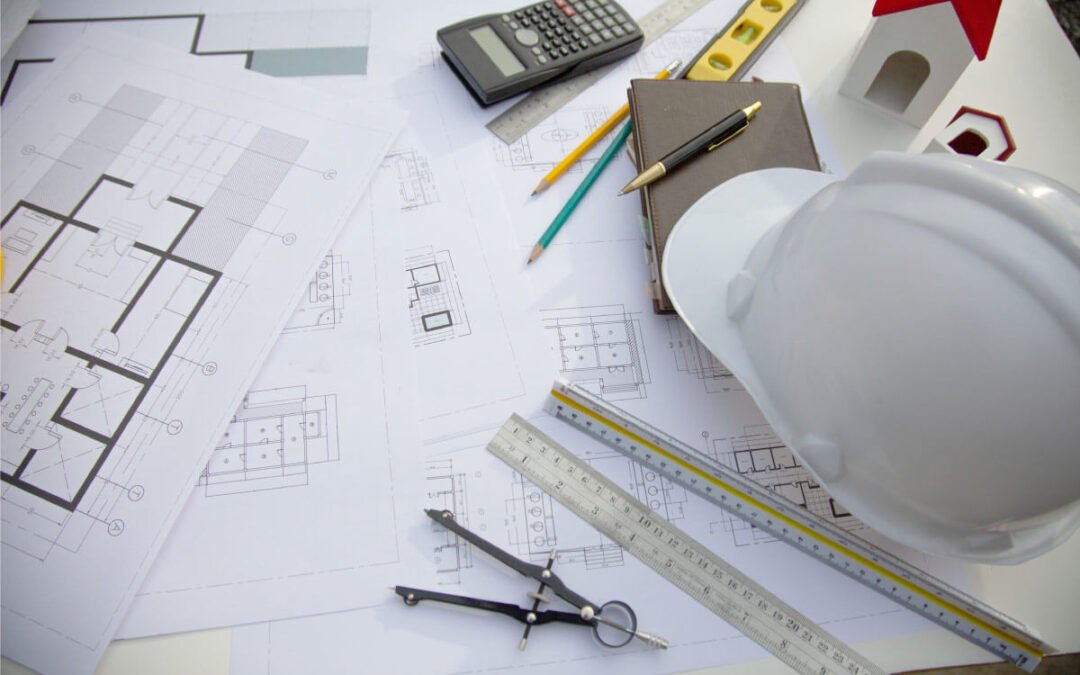Understanding the Construction Process: From Blueprint to Reality
Embarking on a construction project, whether it’s building a new home or renovating an existing space, is an exciting endeavor that promises the creation of something new and transformative. However, the construction process can be complex and multifaceted, involving numerous steps, stakeholders, and considerations. In this guide, we’ll explore the key stages of the construction process, providing insights into each phase to help you better understand how your vision will evolve from blueprint to reality
1. Pre-Construction Phase: Planning and Preparation
Before breaking ground, thorough planning and preparation are essential to ensure a successful construction project. During this phase, the following steps typically occur:
Site Evaluation and Acquisition:
If building a new structure, the site must be evaluated for factors such as soil composition, topography, drainage, and accessibility. If renovating an existing property, assessments are made to determine the feasibility of the project.
Budgeting and Financing:
A comprehensive budget is developed, accounting for all project expenses, including materials, labor, permits, and contingencies. Financing options are explored and secured to fund the construction.
Design Development:
Working closely with architects, designers, and engineers, the project’s design is refined and finalized. This includes creating detailed blueprints, obtaining necessary permits, and ensuring compliance with building codes and regulations.
2. Construction Phase: Bringing Plans to Life:
With the planning stage complete, construction can commence, bringing the project from concept to reality. The construction phase typically unfolds as follows:
Site Preparation:
The construction site is cleared, leveled, and prepared for building, including excavation, grading, and installation of utilities.
Structural Framing:
The skeleton of the building takes shape as structural components such as walls, floors, and roof systems are erected. This phase may involve traditional framing methods or prefabricated systems for efficiency.
Foundation Construction:
The foundation is laid, providing a stable base for the structure. This may involve pouring concrete footings, laying masonry blocks, or installing pilings, depending on the site conditions and building requirements.
Enclosure:
Once the structure is framed, exterior walls, windows, doors, and roofing materials are installed to enclose the building and protect it from the elements.
Finishing Touches:
As construction nears completion, attention turns to the finishing touches that add personality and character to the space, such as paint, flooring, cabinetry, fixtures, and landscaping.
Interior Work:
With the building enclosed, interior work can begin, including electrical, plumbing, HVAC, insulation, drywall, and finishing work. This phase focuses on creating functional and aesthetically pleasing interior spaces.
3. Post-Construction Phase: Inspection, Completion, and Handover:
As construction draws to a close, the project undergoes final inspections, finishes, and is ultimately handed over to the owner. Key steps in the post-construction phase include:
Final Inspections:
Regulatory authorities conduct inspections to ensure the building meets safety, structural, and code requirements. Any deficiencies or issues identified are addressed and corrected.
Punch List:
A final walkthrough is conducted to identify any remaining tasks or deficiencies that need attention. A punch list is created, detailing these items for completion.
Completion and Handover:
Once all work is finished and inspections are passed, the project is deemed complete, and ownership is transferred to the client. Final documentation, warranties, and maintenance instructions are provided.
4. Maintenance and Occupancy:
After construction, ongoing maintenance and occupancy of the building are crucial to ensure its longevity and functionality. This may include routine maintenance tasks, repairs, and upgrades as needed to preserve the building’s value and integrity. By understanding the construction process from start to finish, you can better anticipate the stages, challenges, and requirements involved in bringing your vision to life. Whether embarking on a small-scale renovation or a large-scale construction project, thorough planning, clear communication, and collaboration with experienced professionals are key to achieving successful outcomes.
Ready to turn your vision into reality? Contact us today to embark on your construction journey with confidence and expertise!

